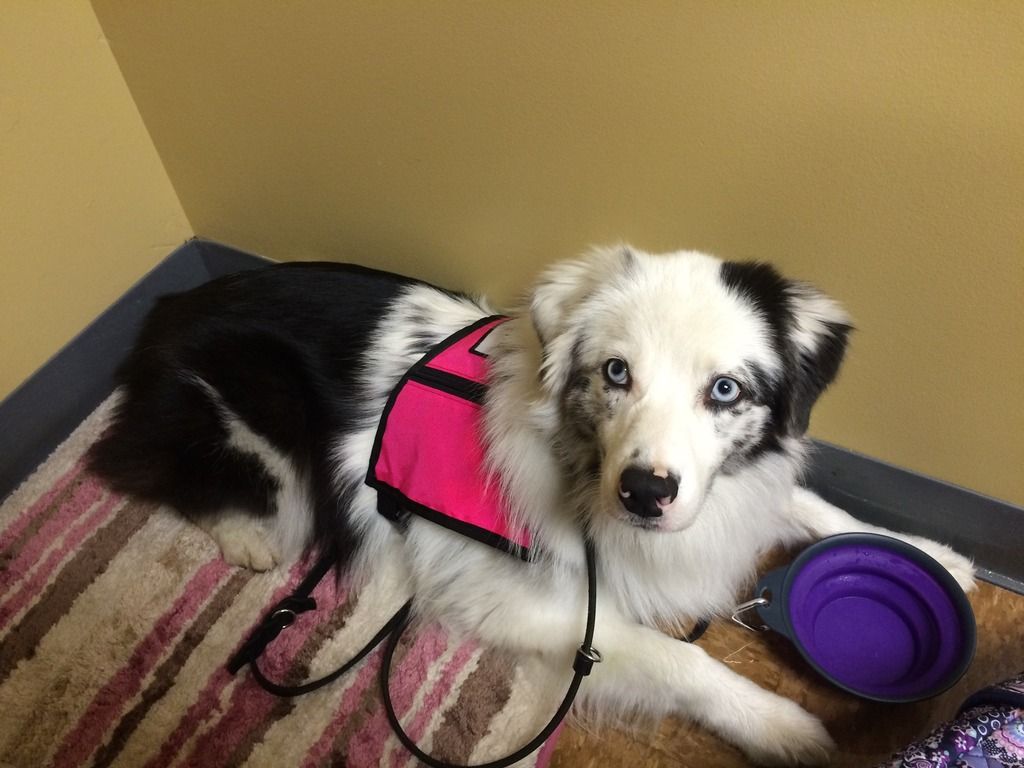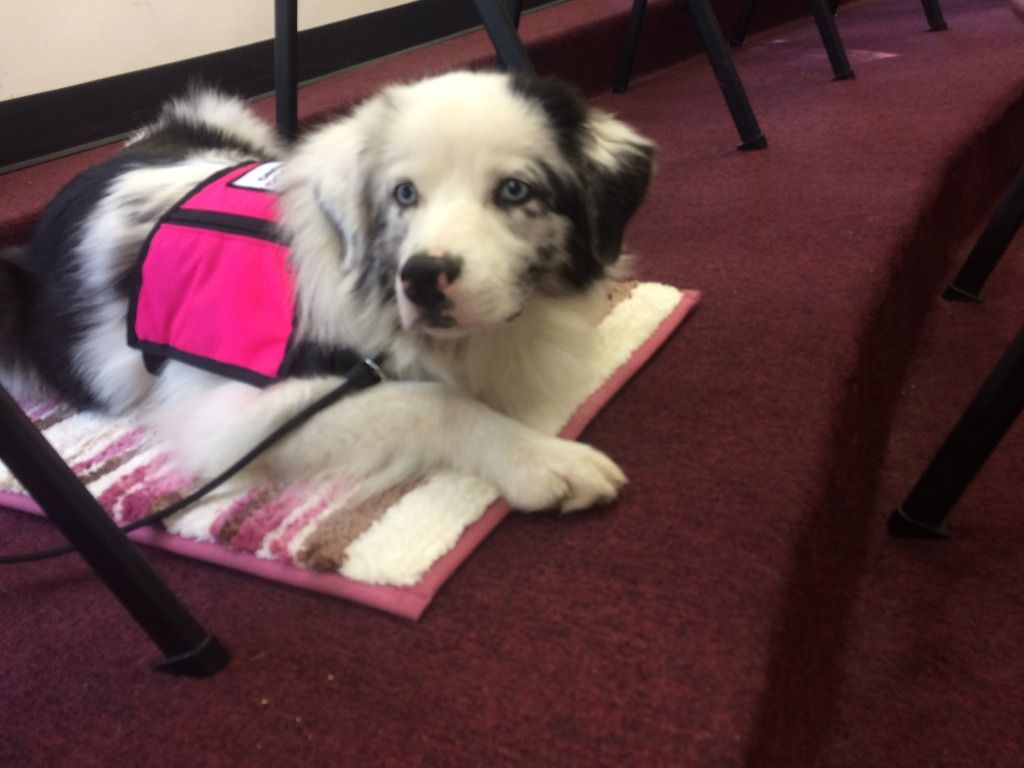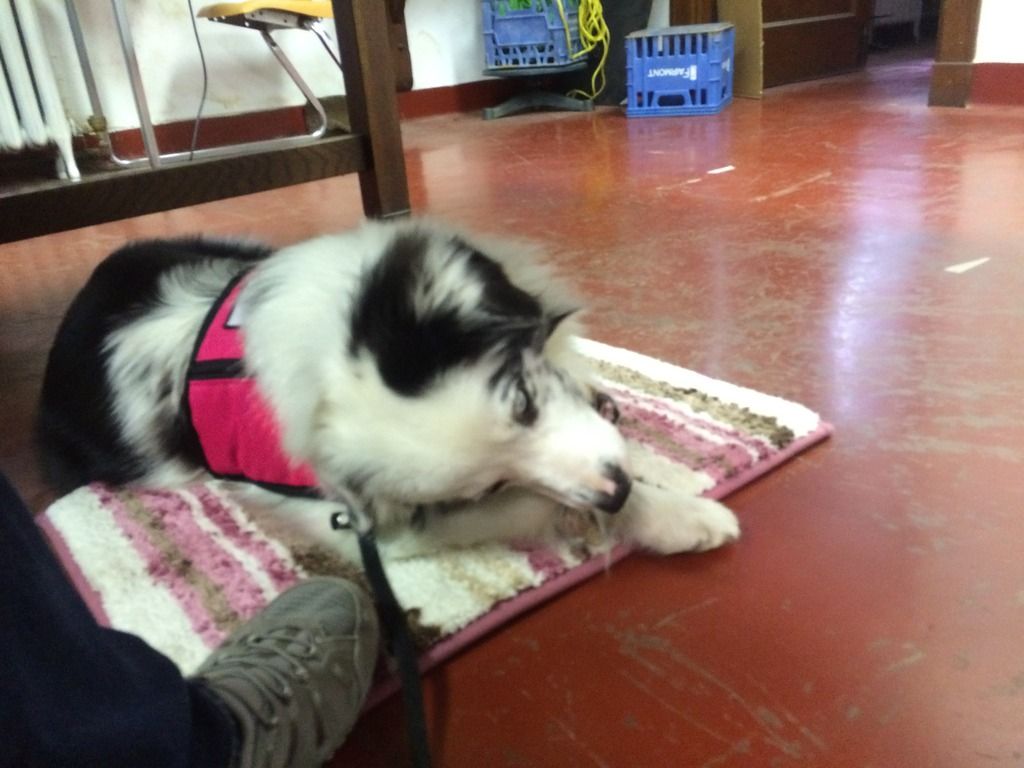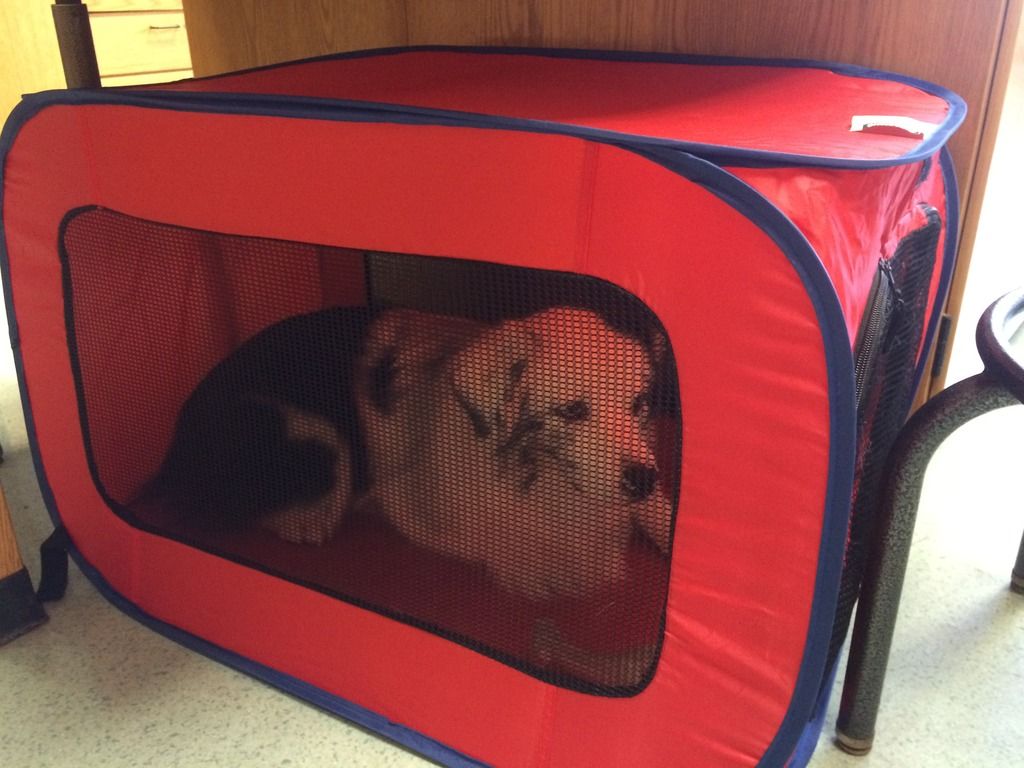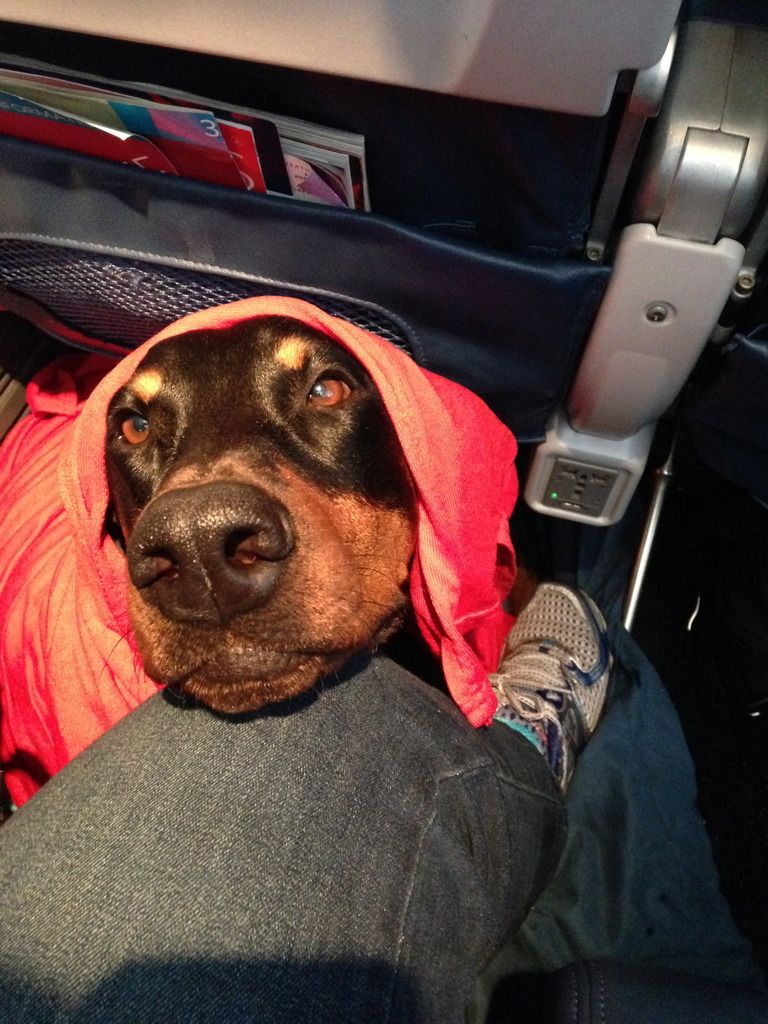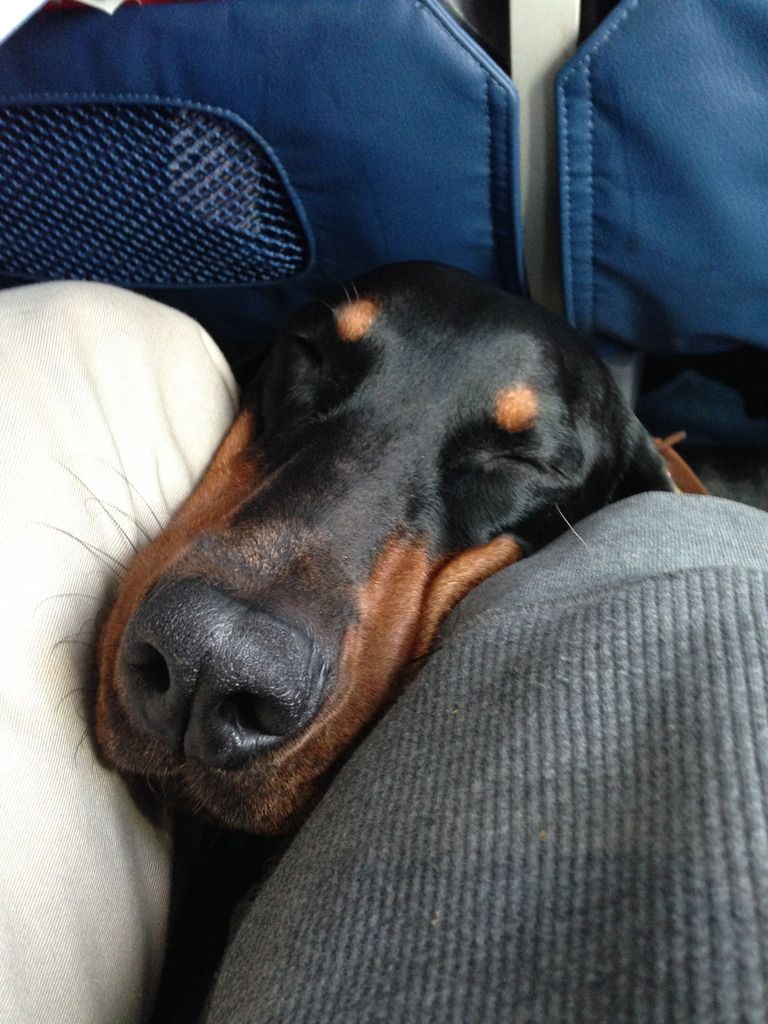Flying with a service dog is a lot like traveling with a very obedient and helpful toddler. As long as you are well prepared, and anticipate pretty much any need that may arise, you'll be fine. You'll just be carrying a lot more stuff than usual, and most of it won't be yours. And you'll have a preoccupation with pottying that will be perplexing to anyone who has never traveled with a dog.
 |
| My service dog's gear always takes up at least one drawer in the hotel room. |
That first flight though ... It can be a bit scary, especially if you've never flown with a service dog before. And even when you have, it can still be nerve-wracking to take your young, inexperienced partner on his or her first plane trip.
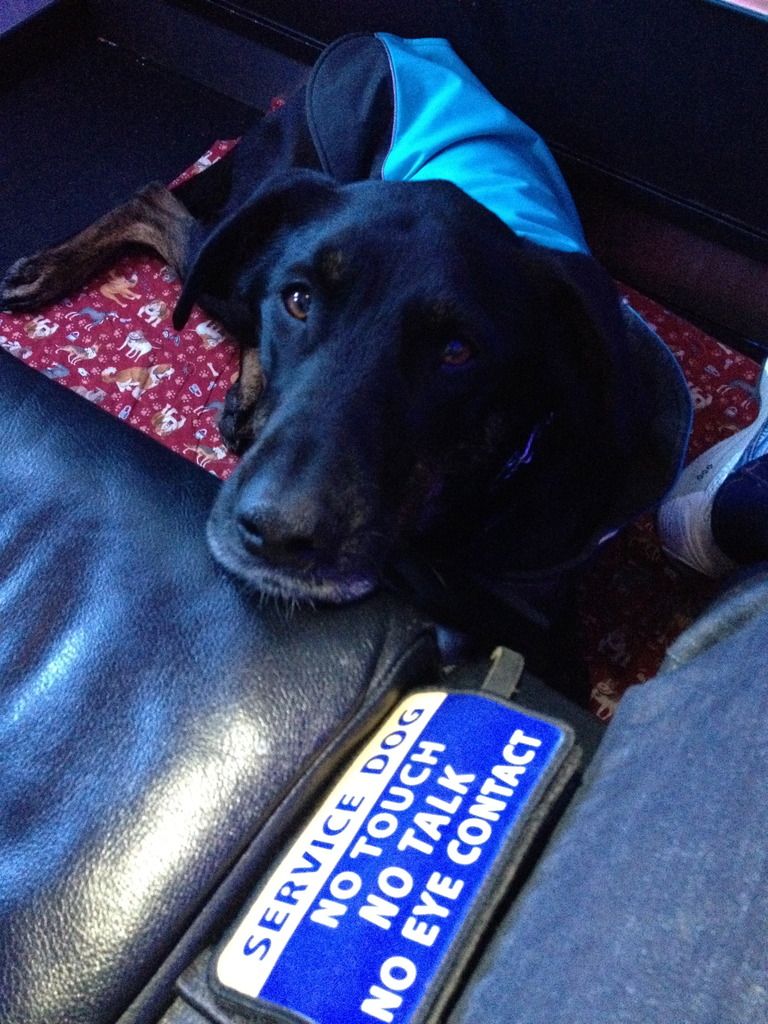 |
Experienced traveler Juno:
Unimpressed by all airplane-related things. |
Juno, my first service dog, made her first flight when she was almost five years old. I was headed back to Ann Arbor, Michigan, so we flew Delta (the only airline that flies direct from San Francisco to Detroit). Delta is the only airline I've flown where I have never had a bad experience getting my tickets. Their disability hotline staff are impeccably well-versed in the Air Carrier Access Act (ACAA), which is the federal law covering service dog access on airplanes.
As ever, my girl was a pro, despite my nerves. At security, she got a pat down from TSA because I chose to call her through the metal detector wearing her service dog gear. Hilariously, when the first TSA agent discovered Juno was female, he immediately called for "female assist." (This has never happened with Kaline, my current—male—service dog, even if he's about to get a pat down from a female agent).
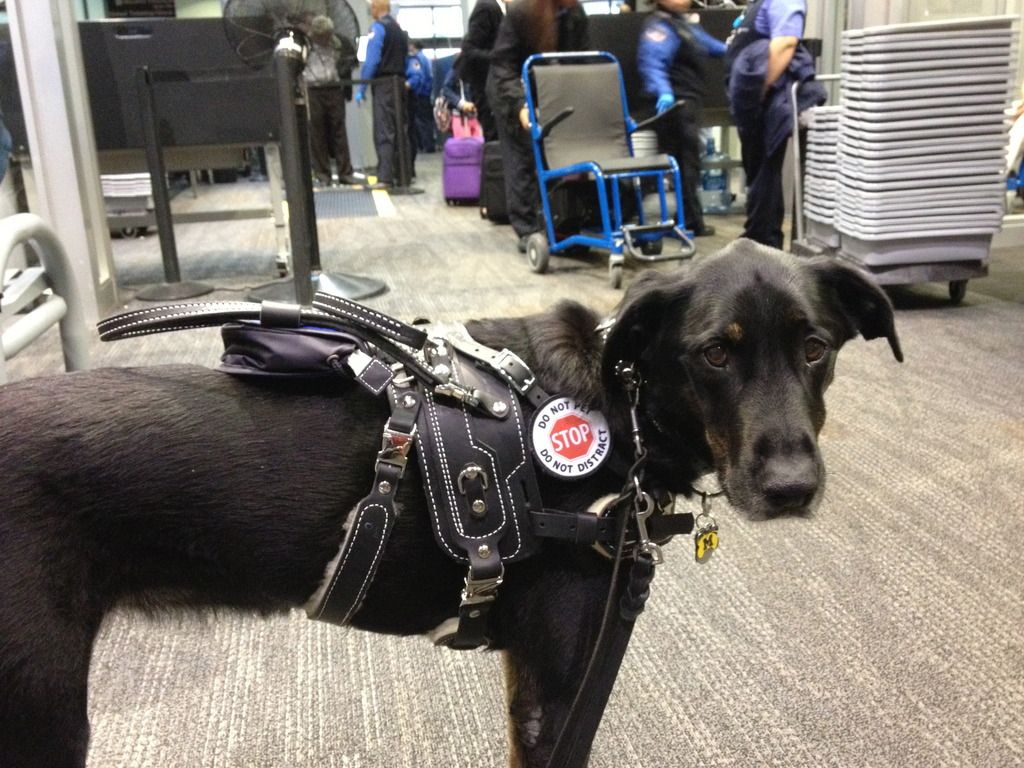 |
| Juno just past security at SFO. |
We got on the plane and Juno promptly curled up in the tiny bulkhead space at my feet (I have since learned to fly economy plus, where the dog usually has more room to stretch out under the seat in front) and went to sleep. Her powers of sleep and relaxation have always been fairly mind-blowing, but even so I couldn't quite believe that she slept through both the takeoff and the landing.
 |
Juno on her first flight.
I always remove my dog's service dog gear
for the flight so s/he can fully relax. |
Juno was also a very easy traveler because she has efficient relieving habits. You tell her to "get busy," and she does.
Immediately. No. 1, No. 2, and done. She also seems to have an iron stomach (no matter what she eats, it almost never upsets her digestion) and an iron bladder. Her only requirement is that the pottying happen on something other than cement or asphalt.
I should note that airports legally must have a service dog relief area. However, that area does not have to be conveniently located or in any way appealing to dogs. San Francisco's area seems to be miles away from everything useful, and is slightly smelly and rather uncomfortable rocks dumped into a chain-link enclosed pen. They've tried to make it cute by having you follow little pawprints to get there, but after fifteen minutes of following said pawprints, you start to get a little annoyed.
Which brings me to one of the major perks of traveling with a male service dog who lifts his leg.
Any vertical surface can be a potty spot! No need to wander about looking for grass, dirt, or gravel. Find a handy pole somewhere out of the way, and you're golden.
In that regard, Kaline has learned to do something Juno never had the opportunity to do: How to pee inside in the best service dog relief area ever. Just before Kaline's first flight, the Detroit airport put in a fabulous relief area
inside security. The amount of anxiety this relieves can't really be overstated.
First of all, having to go through security twice due to needing a potty break is just a pain, especially if your disability affects your stamina and/or mobility. Trying to get out to the distant potty spot and
then having to do security during a layover is even worse. Having a relief area inside security saves a handler innumerable amounts of stress and energy.
And you may have seen the story that made news of the service dog who had such a bad accident on a plane that they had to make an emergency landing ... That story features prominently in the nightmares of many handlers. The easier it is to potty your dog right before you fly, the better! The first time I asked Kaline to eliminate there, he looked at me like I was insane—"We don't PEE inside! What's the matter with you?" Now, when we get off the plane in Detroit, he books it straight to the area by Gate 34.
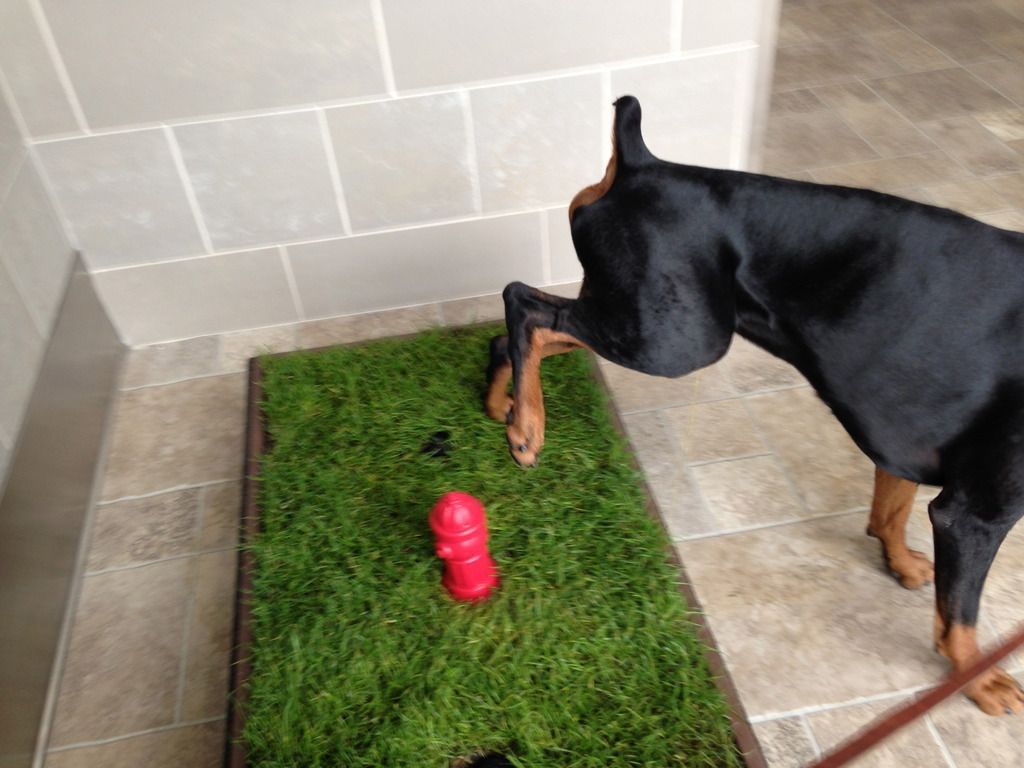 |
| Can't beat the Detroit relief area. |
Kaline's first flight was nerve-wracking in different ways from Juno's. With him, I had a good idea of what to expect at the airport and on the plane. I was able to prepare him more specifically for the ordeal. We practiced the stand for examination endlessly, since he is a far more stranger-social dog than Juno and would likely try to lick the TSA agent to death if allowed. He learned to curl up in a little ball at my feet and ride in the passenger foot-space of the car, getting comfortable in a small space and becoming accustomed to the rumbling feeling, as well as occasional "turbulence" if my dad was the driver.
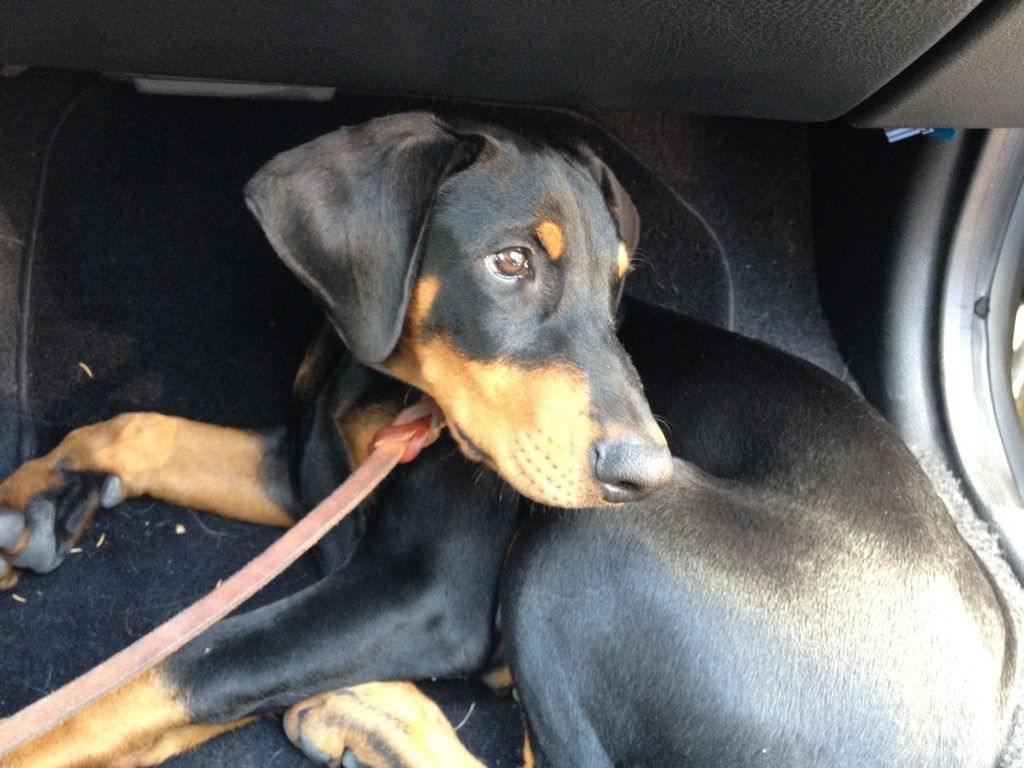 |
| Baby Kaline in the passenger foot space of my car. |
We even did a practice run through security with my friend Sonja, whose service dog Chief is Kaline's best buddy. Practice runs are far more to settle any handler nerves than to settle the dog's. Kaline was completely fine, and once I saw him do it without the pressure of a flight to catch, I was able to be much more relaxed during the real thing!
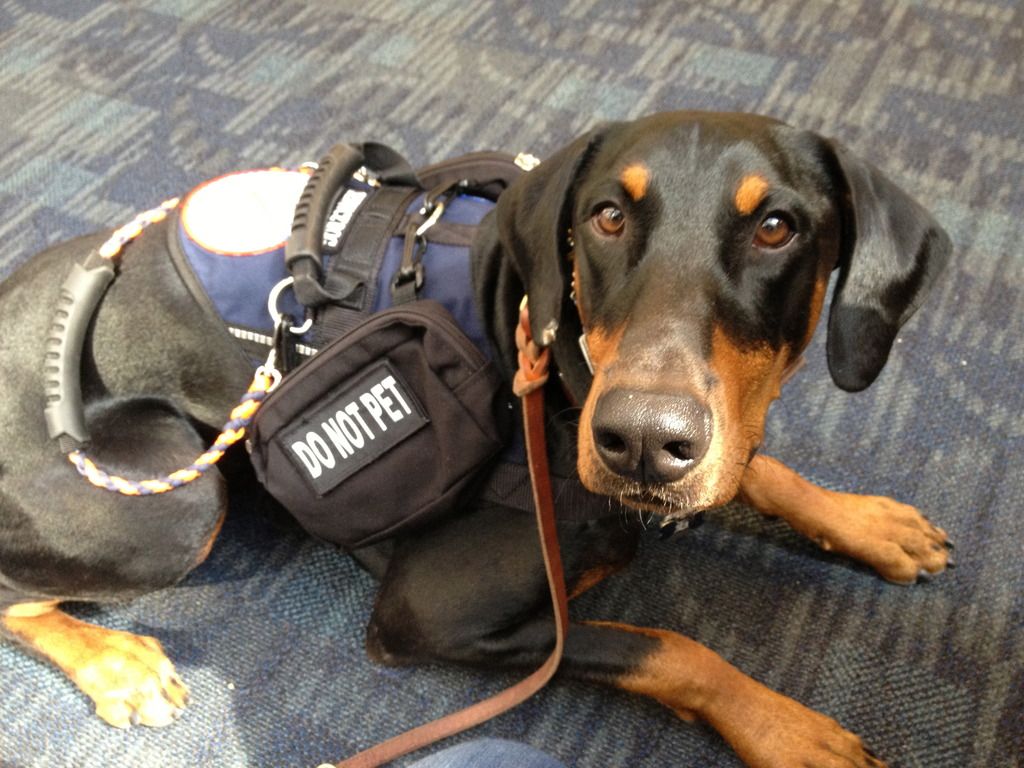 |
| Kaline waiting to board his first flight. |
Kaline was only sixteen months old when he did his first flight. It worked out that both my parents were going on the trip, so we took up a whole row on the plane. This turned out to be really good, because Kaline did not sleep through takeoff or landing. I had armed myself with high value treats, expecting this to happen, so he got rewards all during the scary parts in addition to being cuddled by the whole family.
 |
| Kaline on his first flight, once the excitement of takeoff had ended. |
Being a diva Doberman, Kaline was also more high maintenance in flight than Juno because he believes any temperature under 60 degrees to be extreme cold. Our last several flights have been so warm as to be nearly uncomfortable, but back then all the planes were very chilly. Where Juno just curled up on a thin mat and conked out, in "cold" Kaline requires: a thick Ruffwear pad to insulate him from the plane's cold floor, his Ruffwear Cloudchaser, his fleecy pajamas, and sometimes a Delta blankie from a kind flight attendant.
Though Kaline did well in the air, his apprehension during takeoff and landing was a bit worrying to me. However, with every flight he took, that diminished. Today, Kaline is a pretty experienced flyer and is unimpressed by all the strangeness of air travel.
All he needs is a comfy headrest, and he's good to go!
Colt
